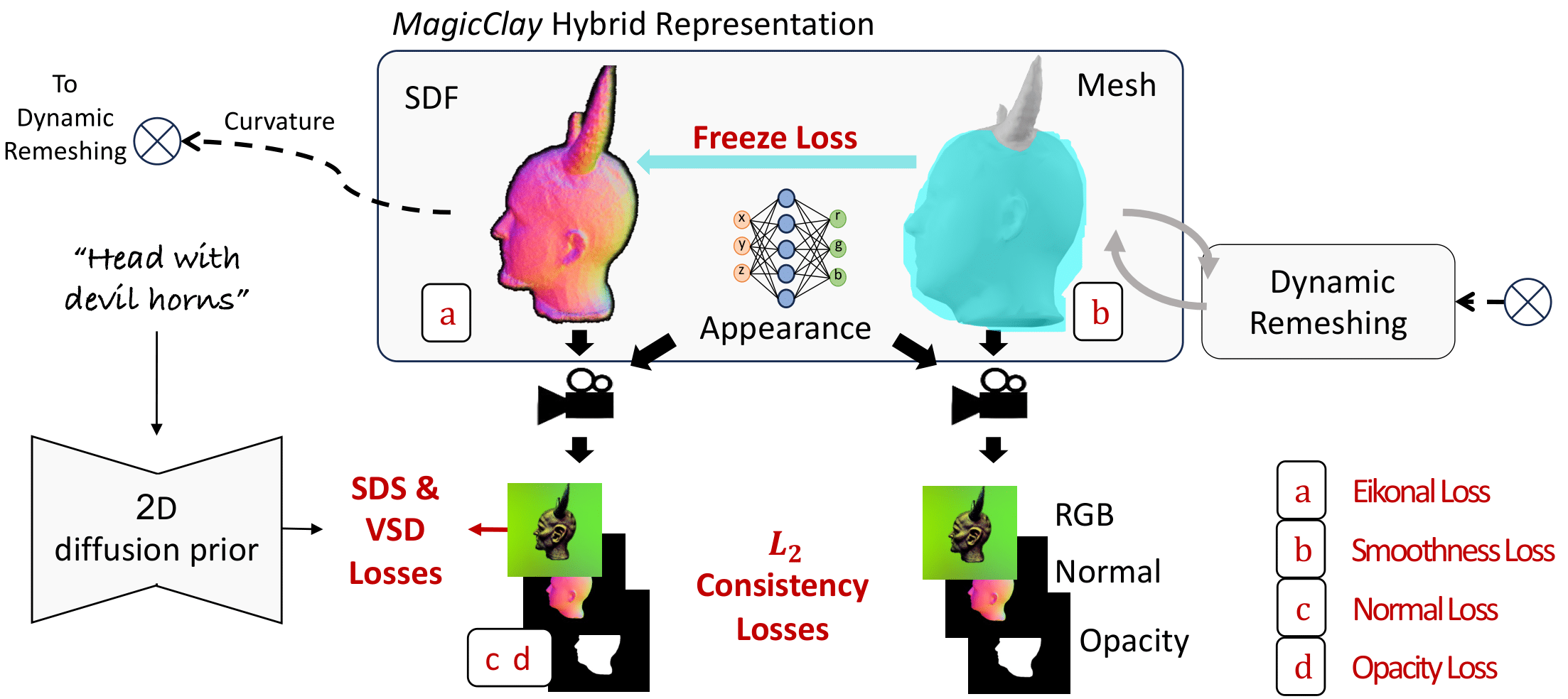MagicClay: Sculpting Meshes With Generative Neural Fields
Abstract
Recent developments in neural fields have brought phenomenal capabilities to the field of shape generation, but they lack crucial properties, such as incremental control — a fundamental requirement for artistic work. Triangular meshes, on the other hand, are the representation of choice for most geometry related tasks, offering efficiency and intuitive control, but do not lend themselves to neural optimization. To support downstream tasks, previous art typically proposes a two-step approach, where first a shape is generated using neural fields, and then a mesh is extracted for further processing. Instead, in this paper we introduce a hybrid approach that maintains both a mesh and a Signed Distance Field (SDF) representations consistently. Using this representation, we introduce MagicClay — an artist friendly tool for sculpting regions of a mesh according to textual prompts while keeping other regions untouched.

BibTeX
@misc{barda2024magicclay,
title={MagicClay: Sculpting Meshes With Generative Neural Fields},
author={Amir Barda and Vladimir G. Kim and Noam Aigerman and Amit H. Bermano and Thibault Groueix},
year={2024},
eprint={2403.02460},
archivePrefix={arXiv},
primaryClass={cs.GR}
}